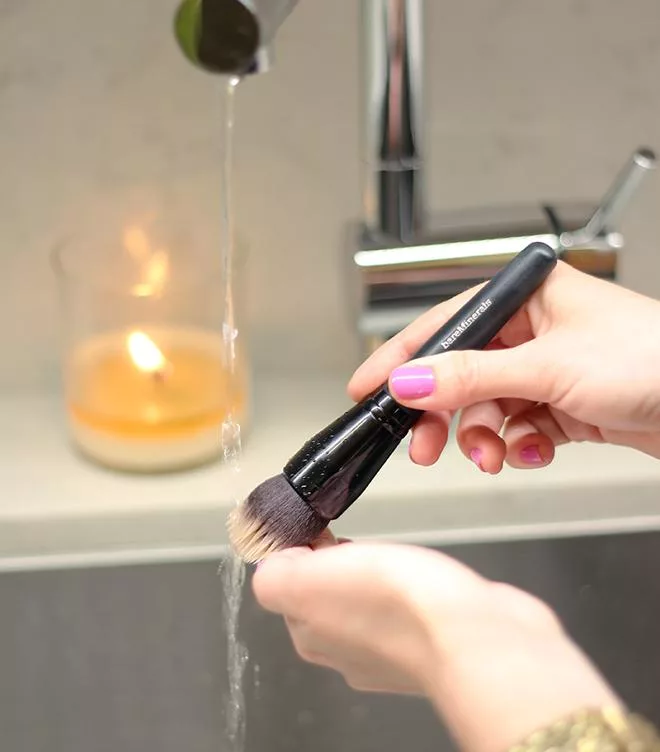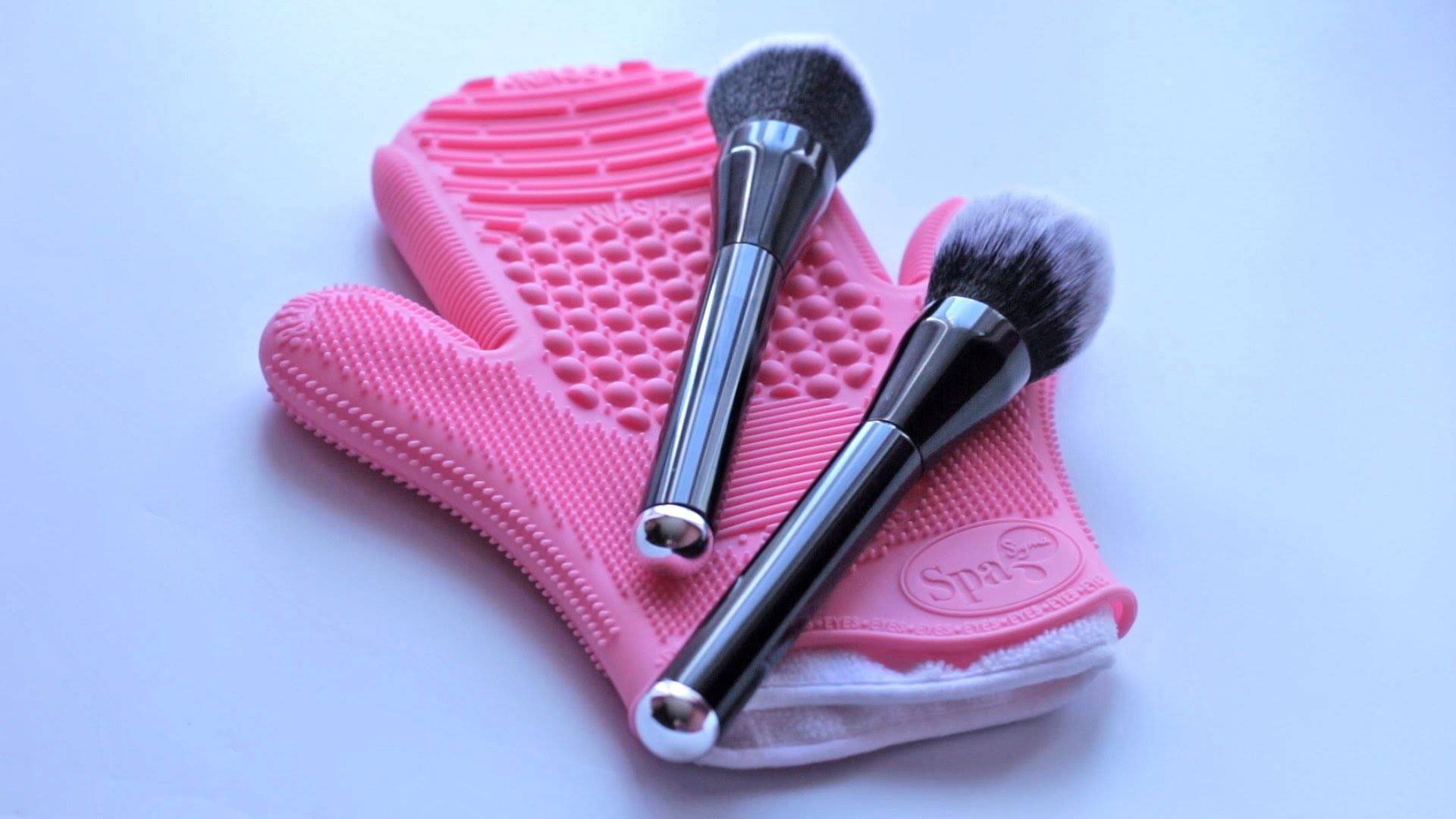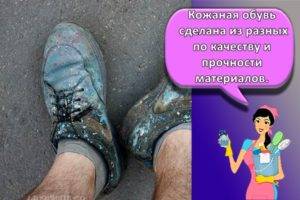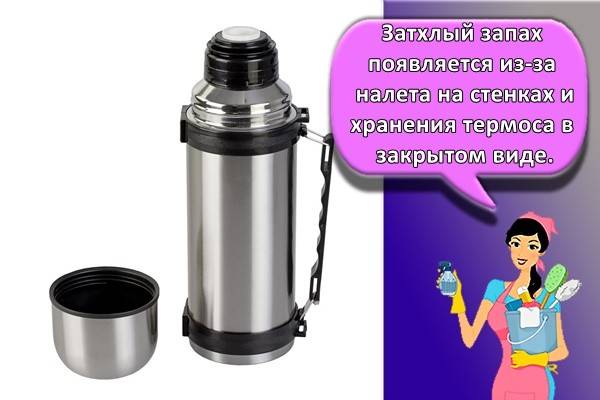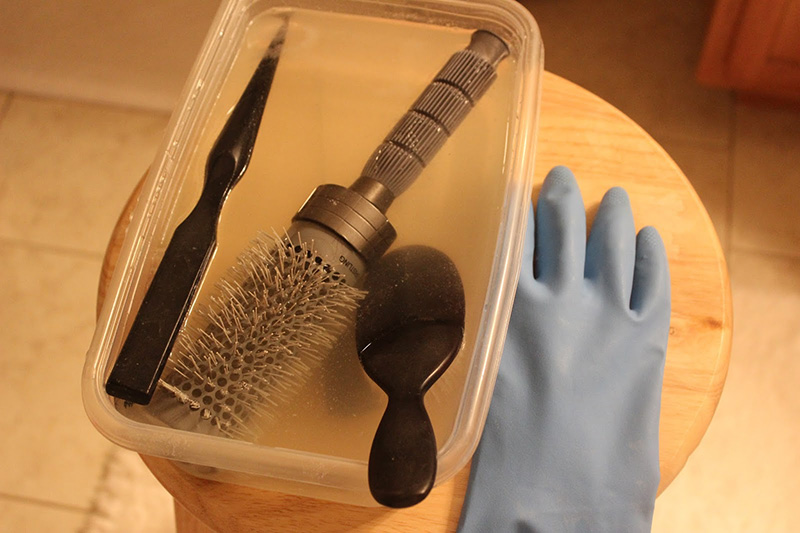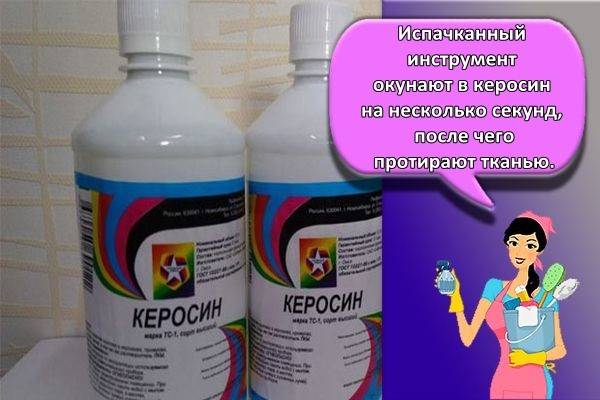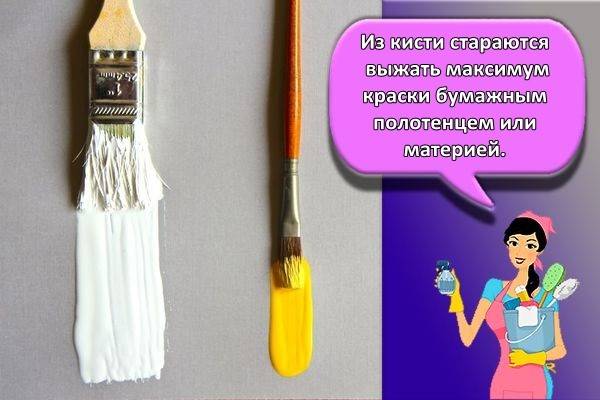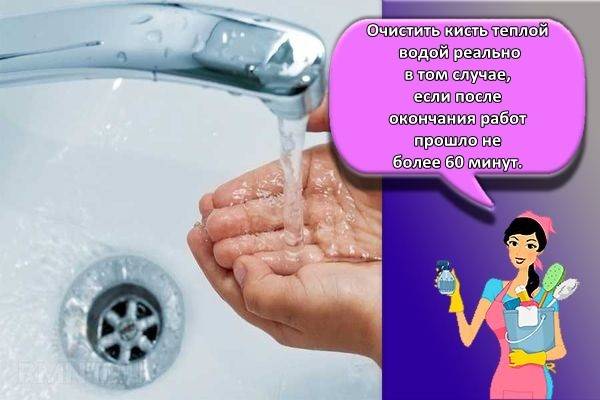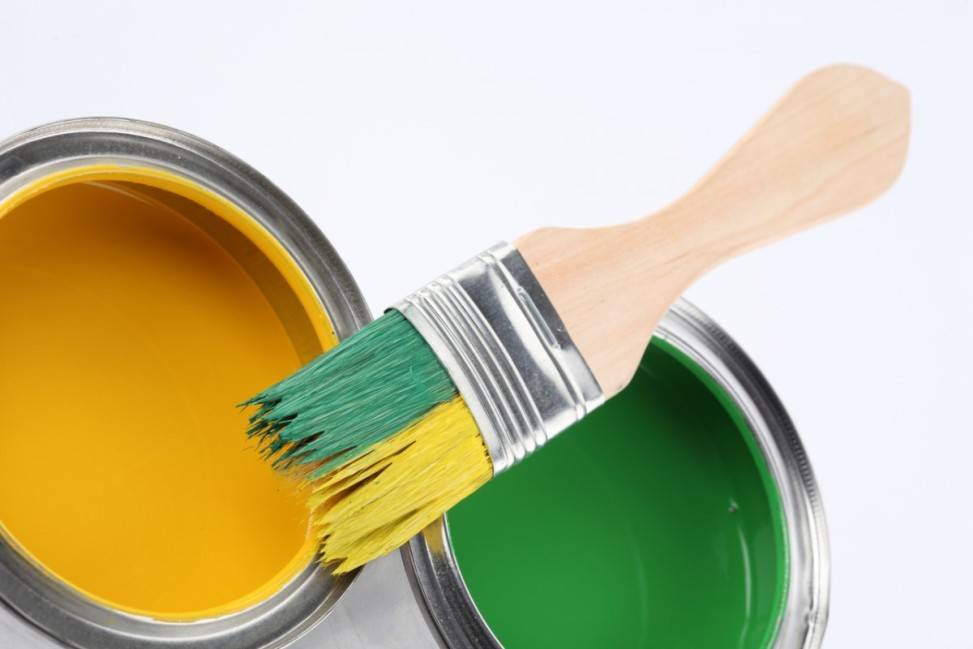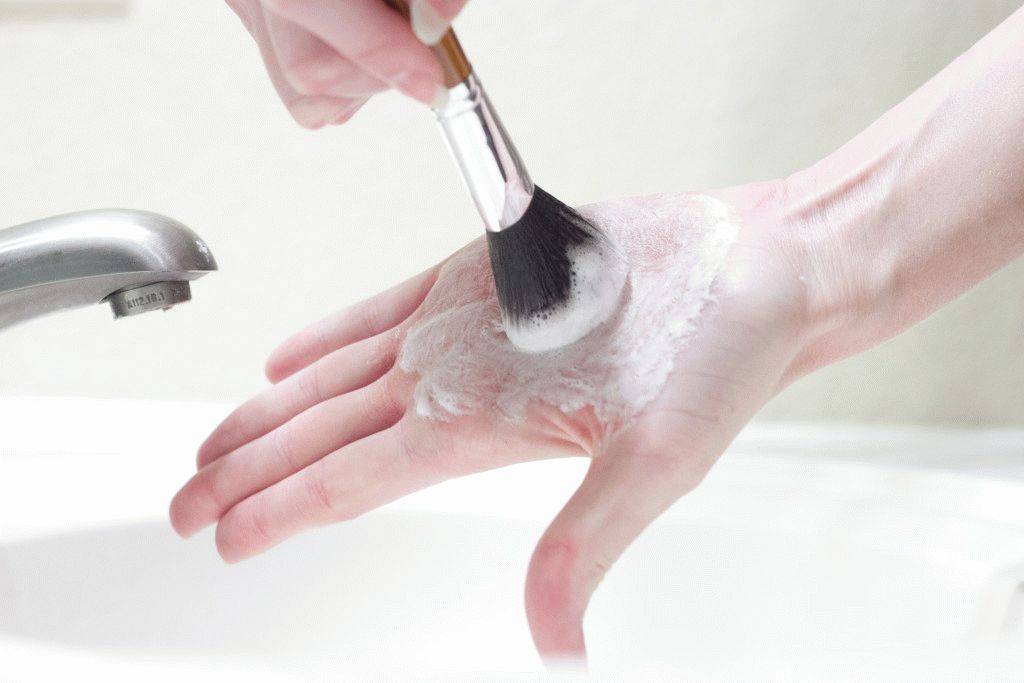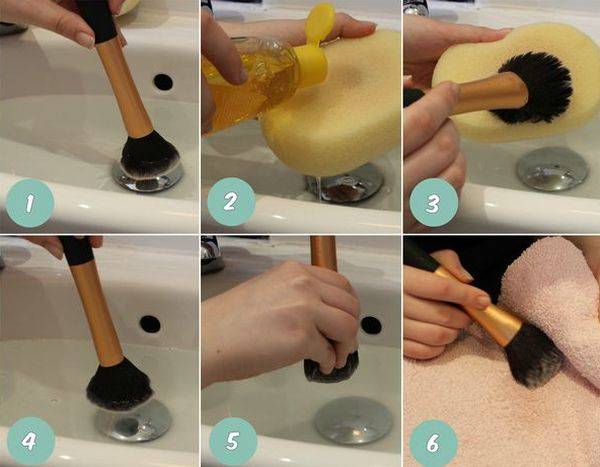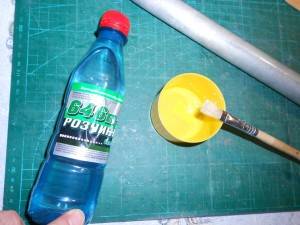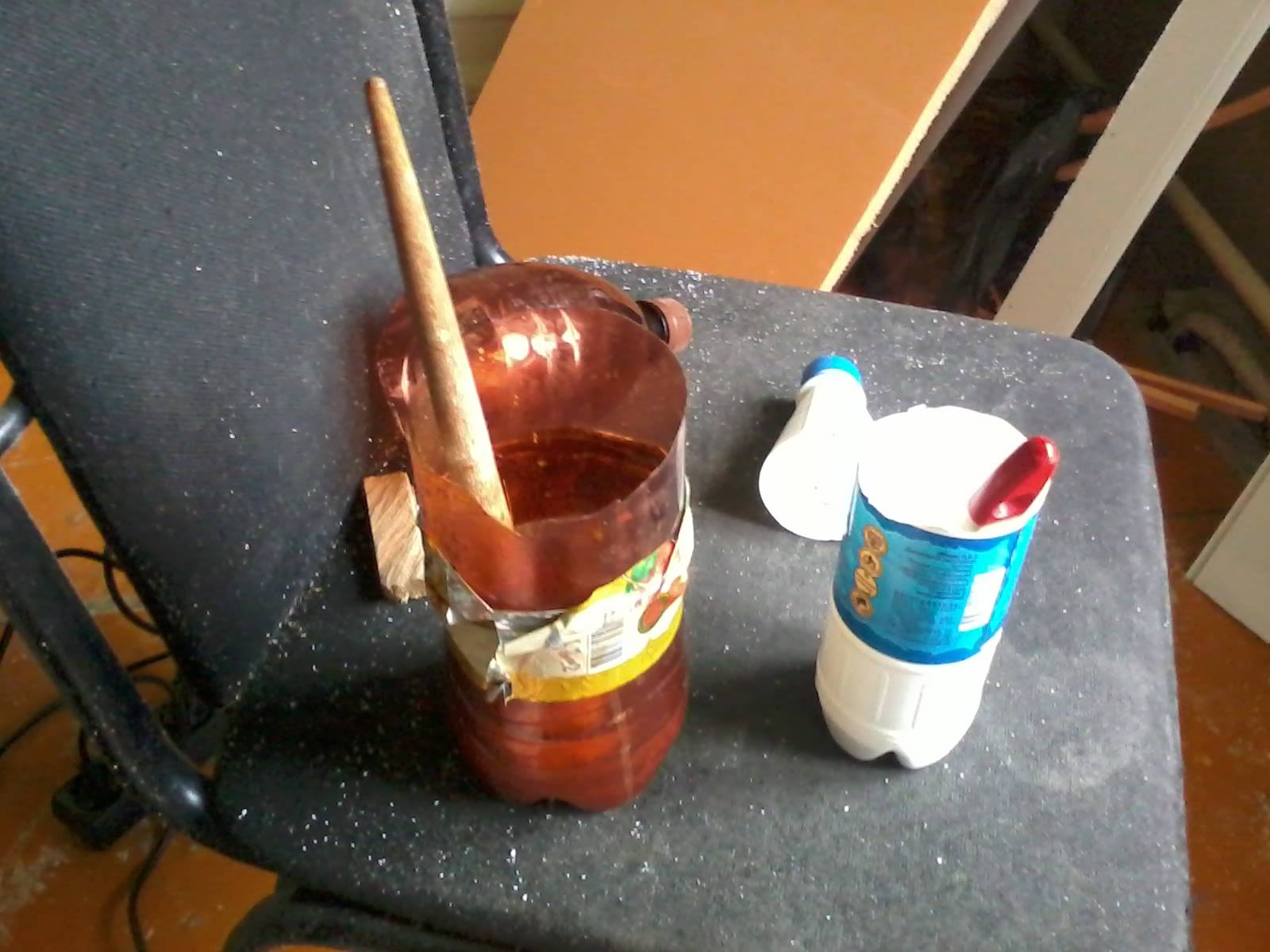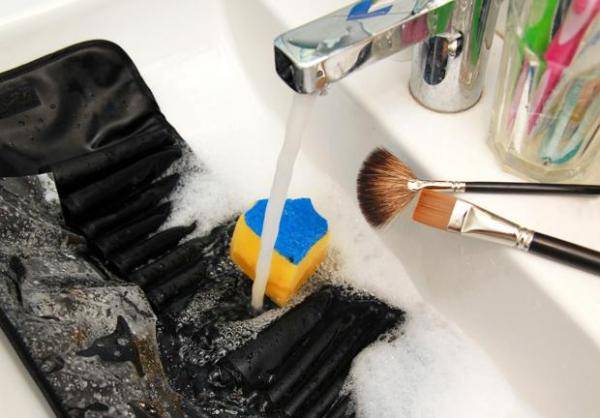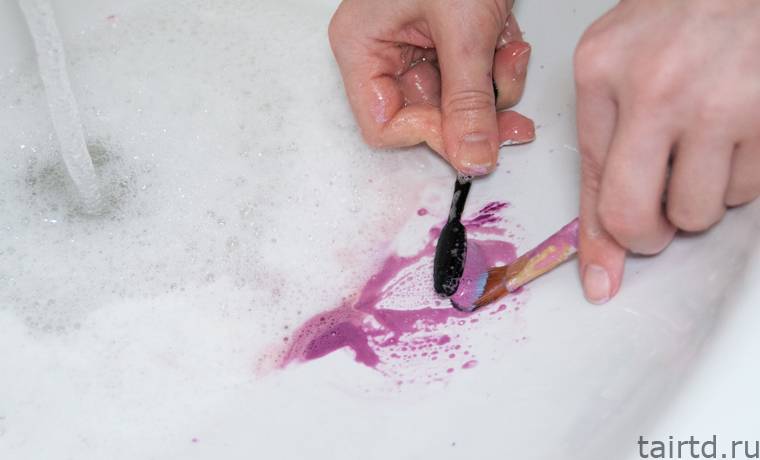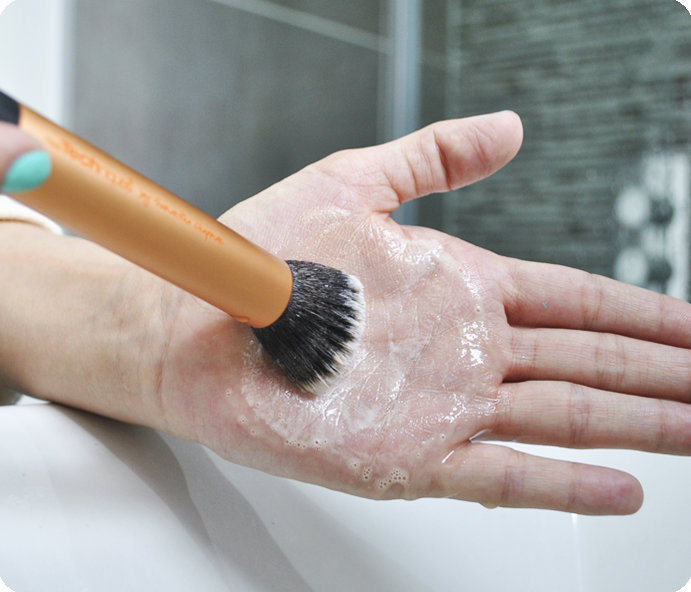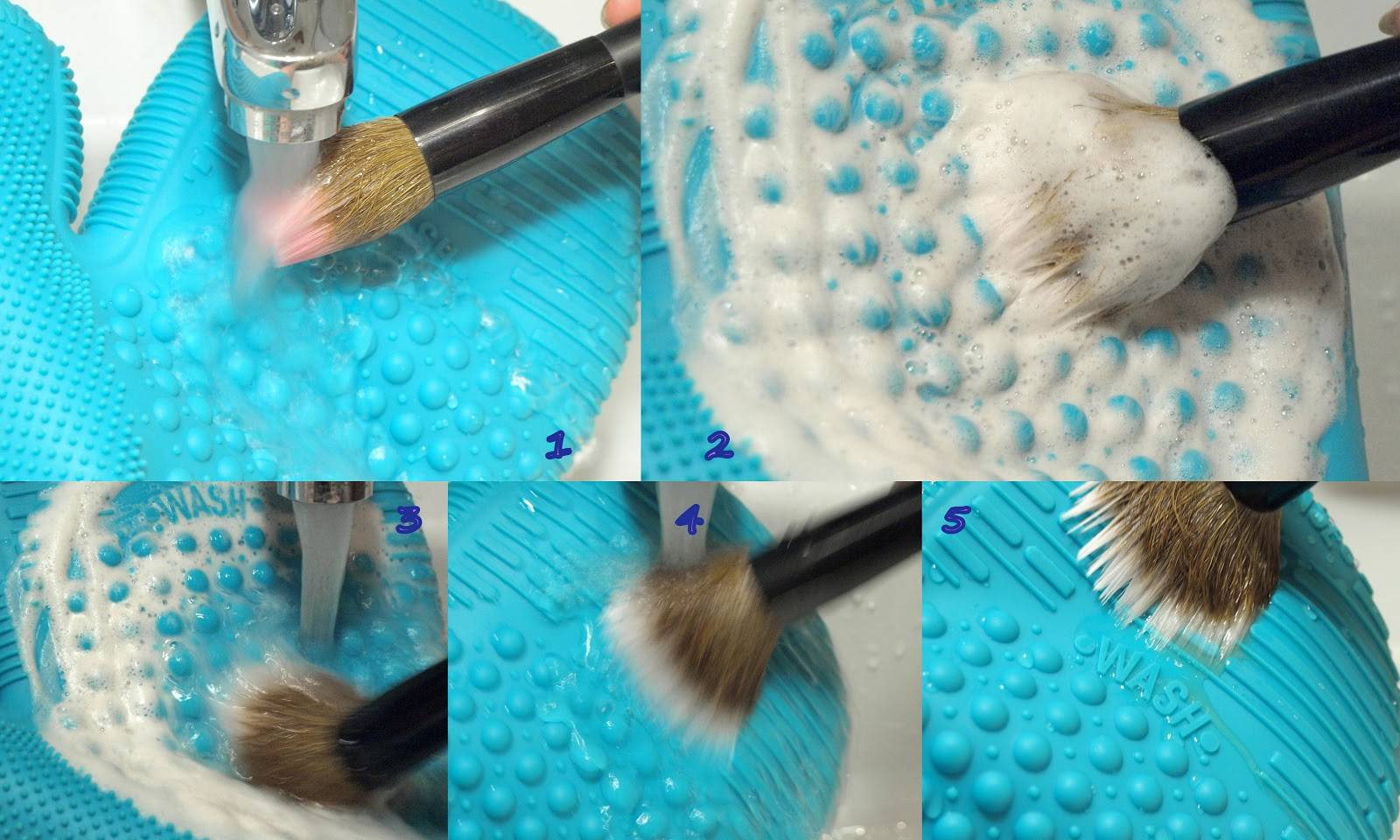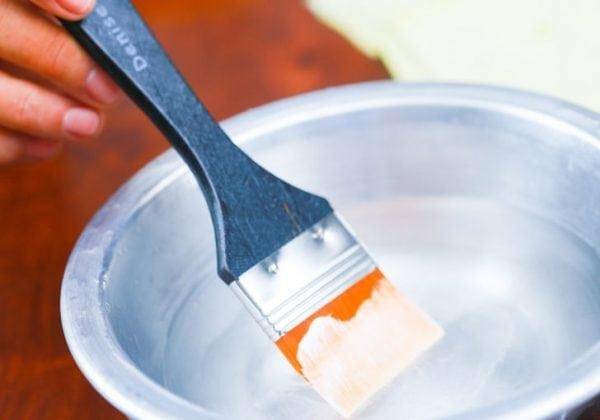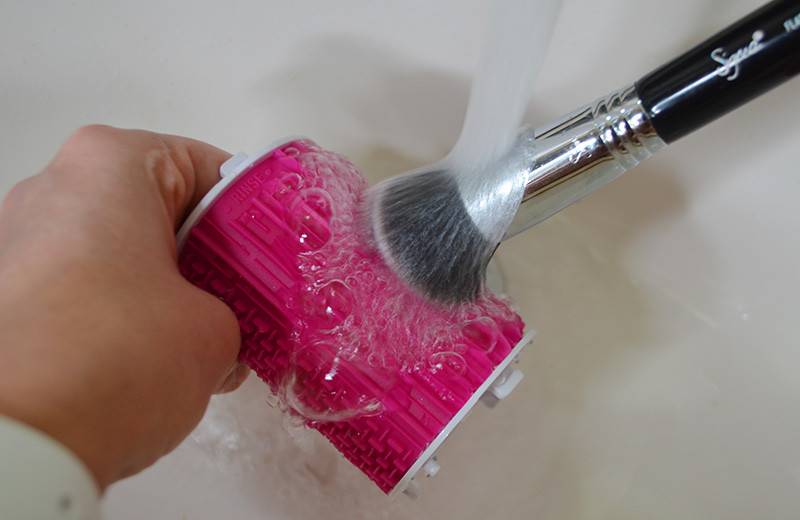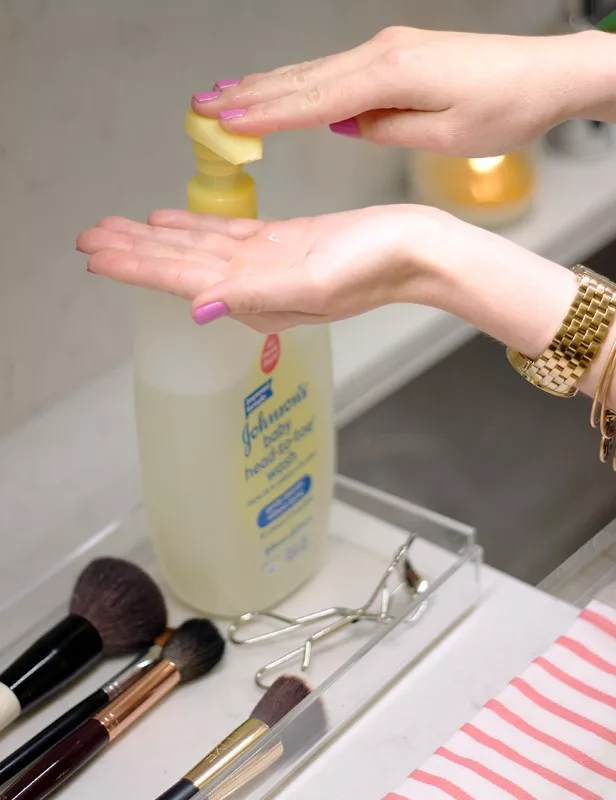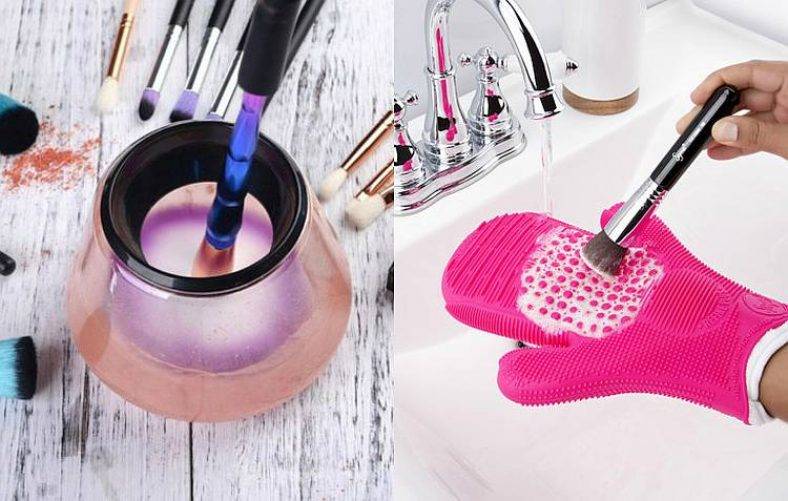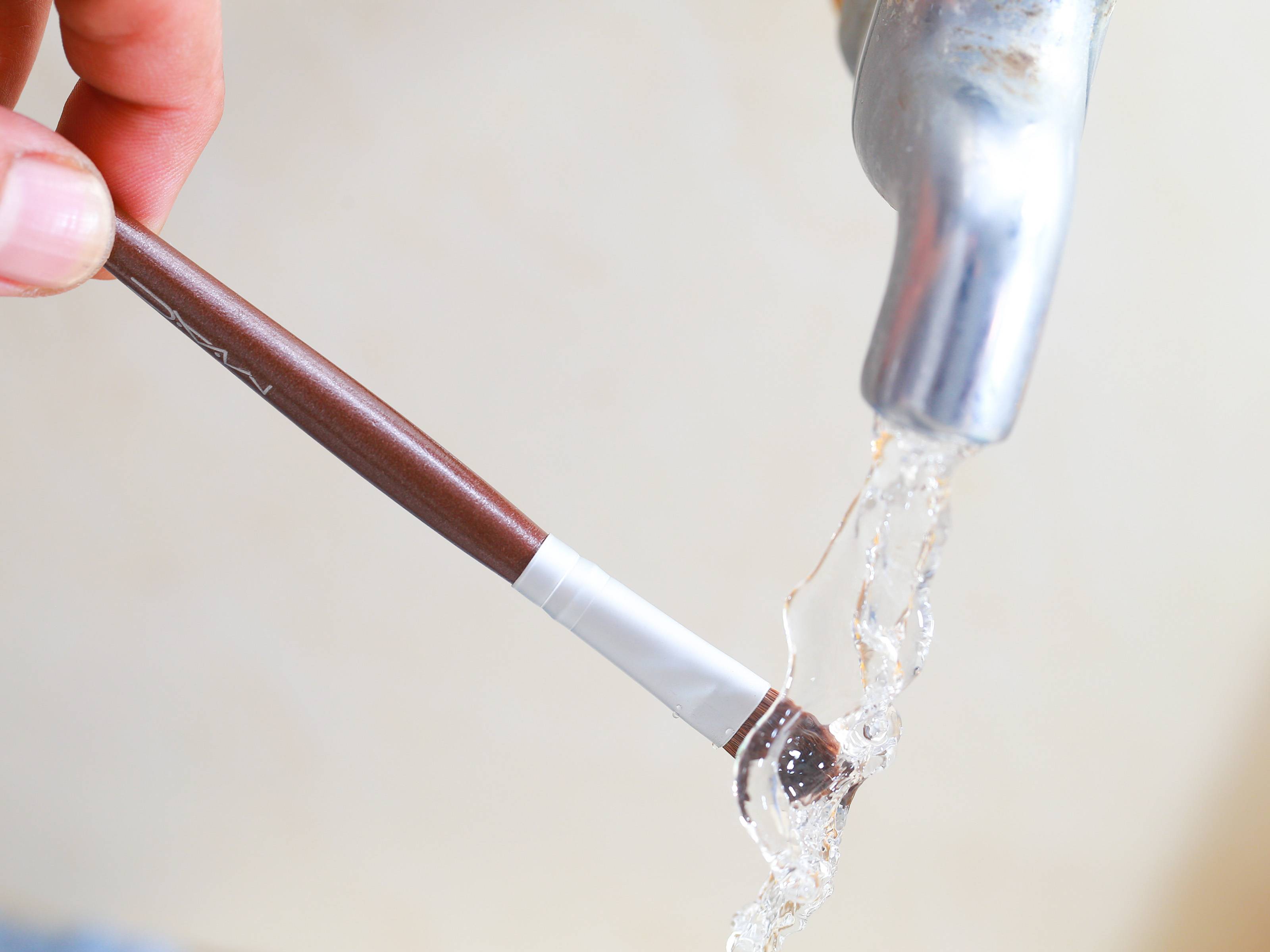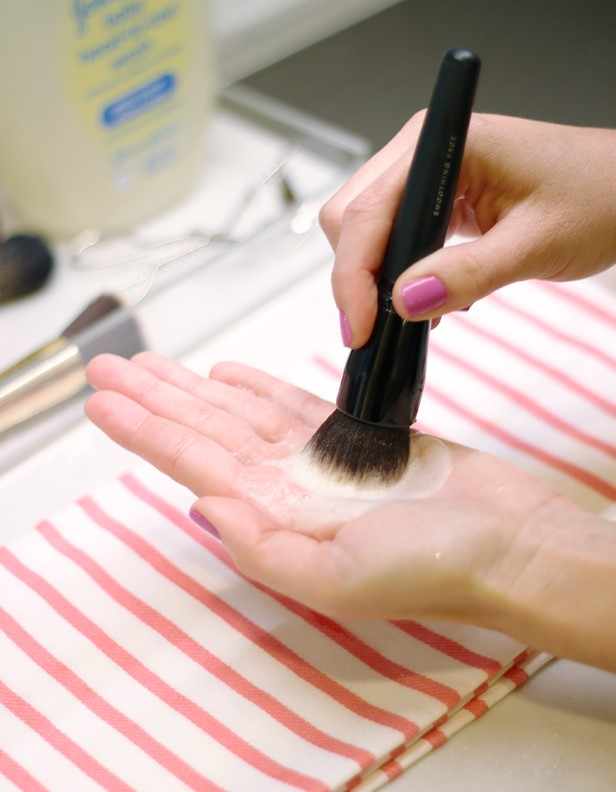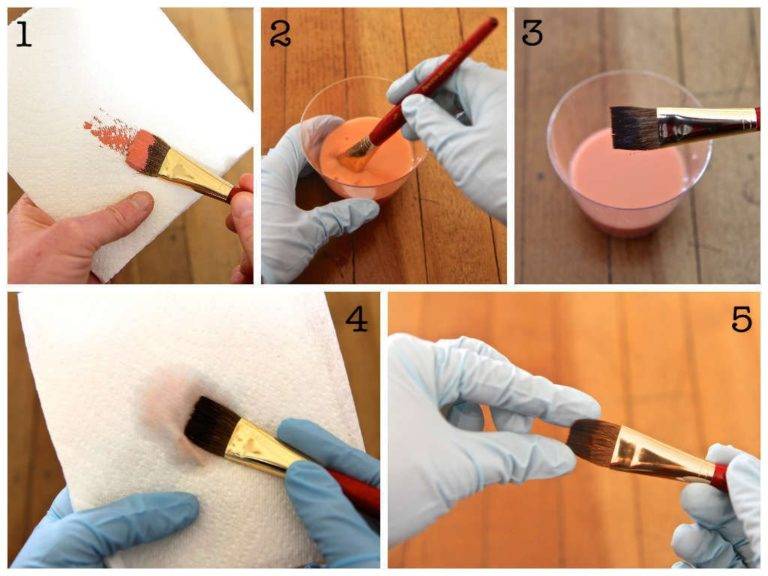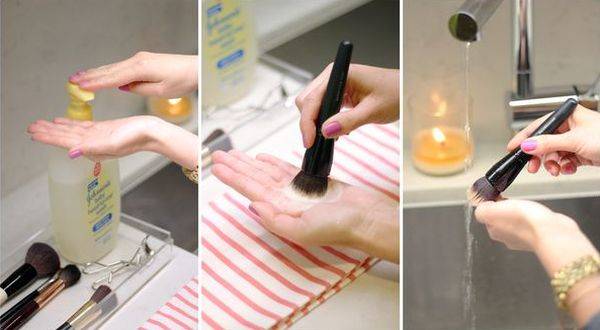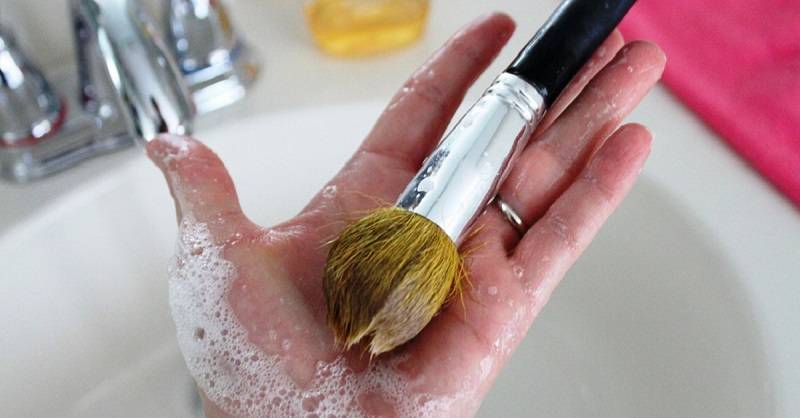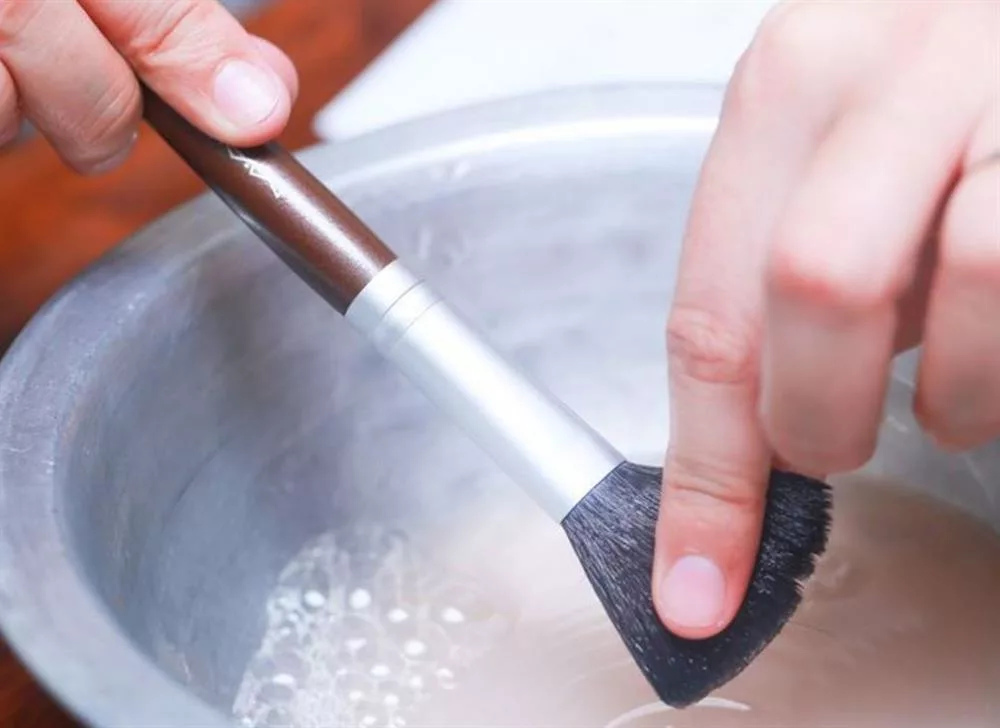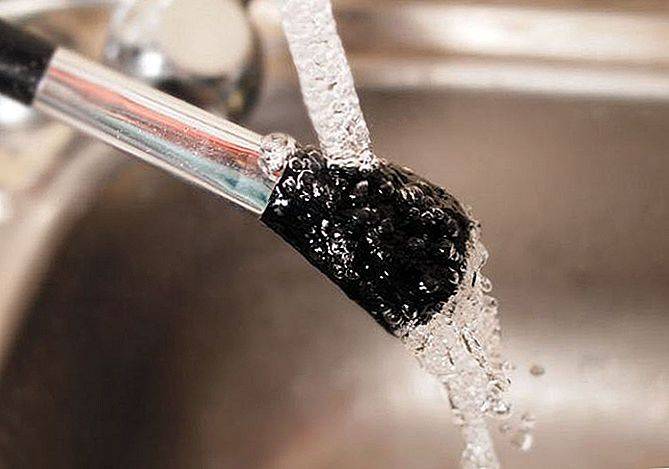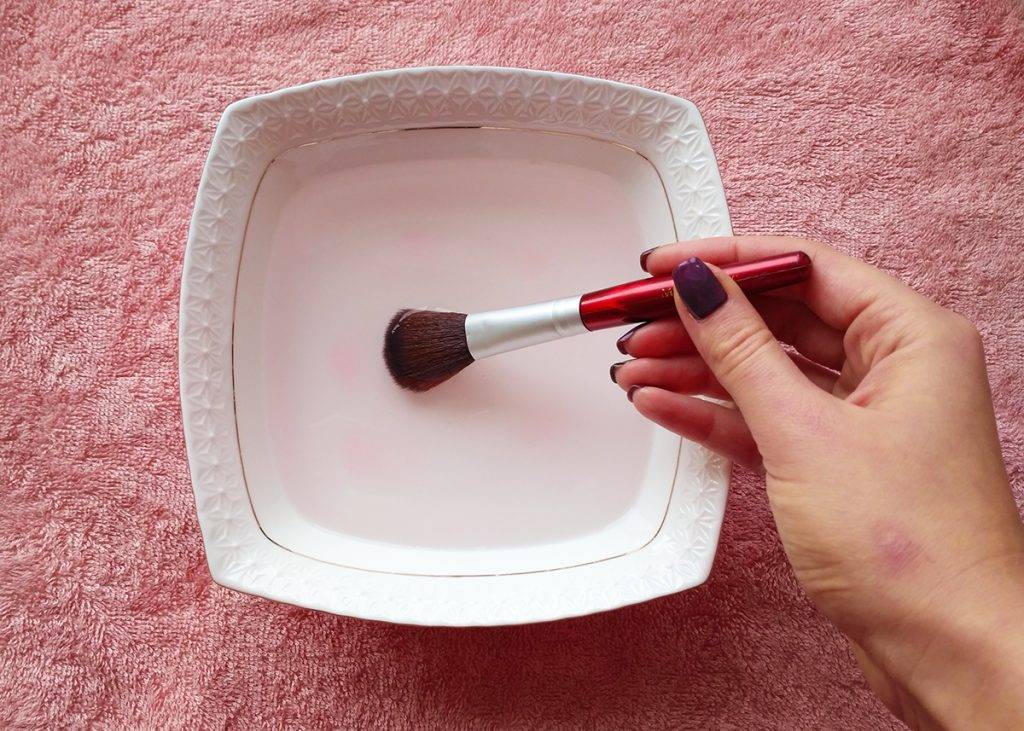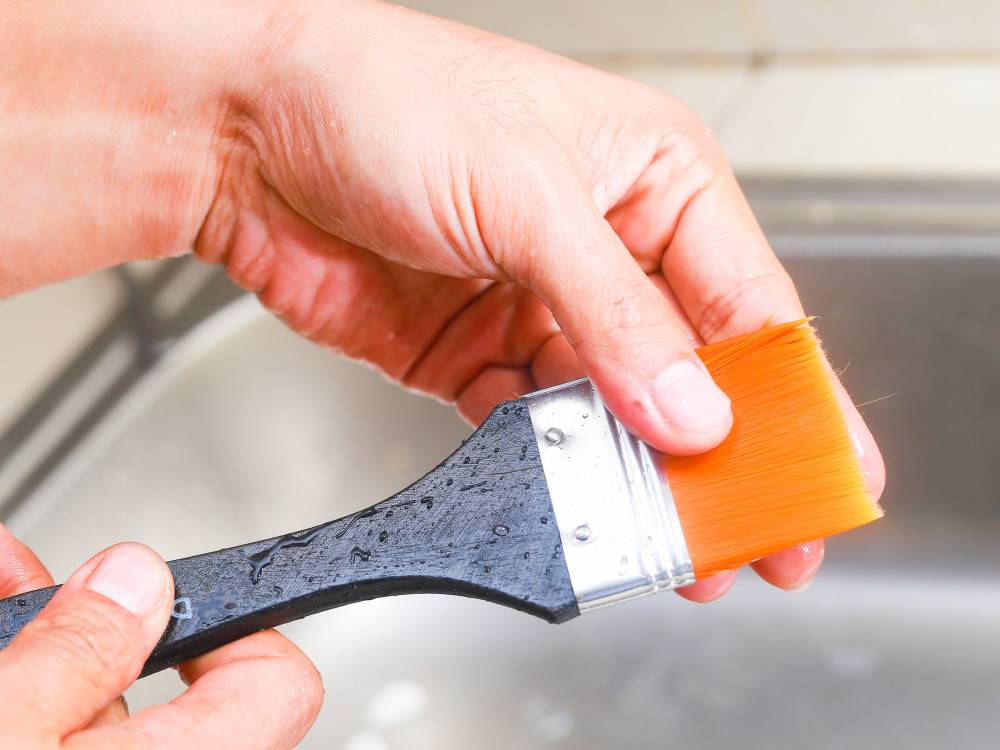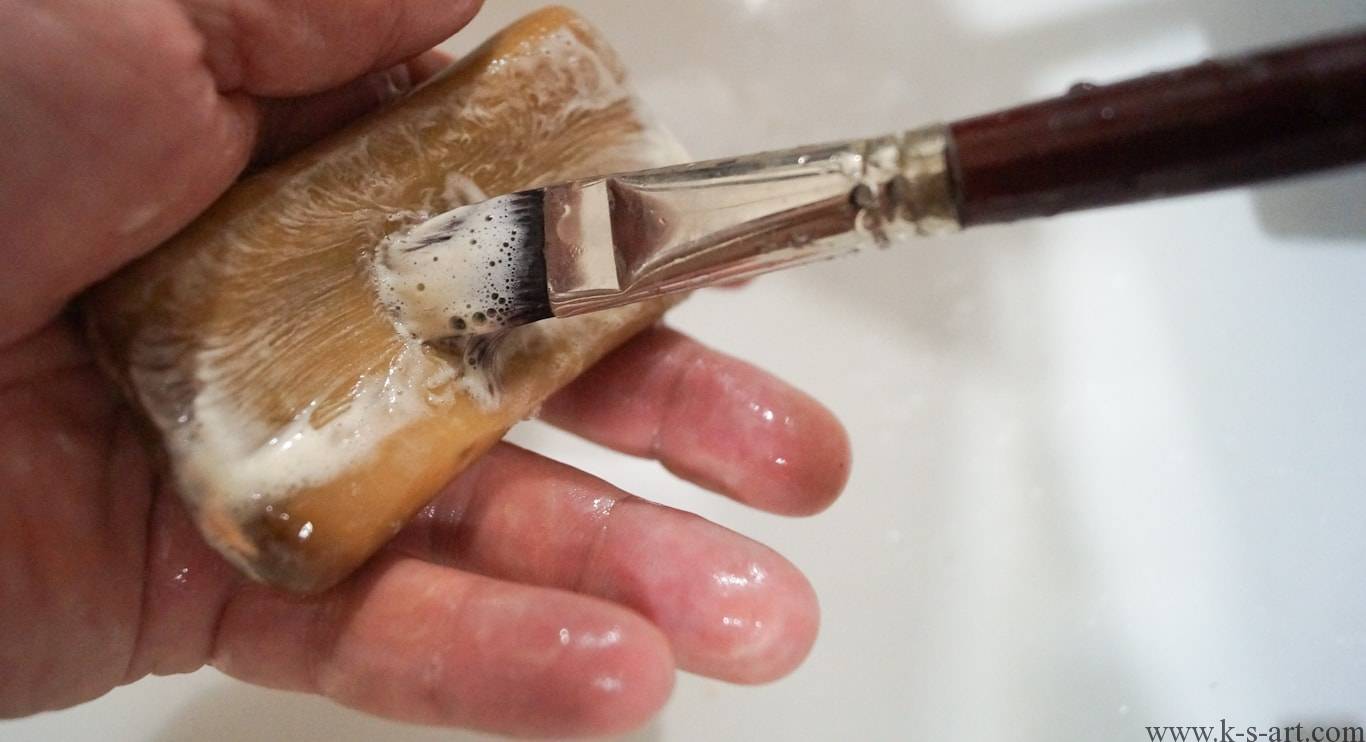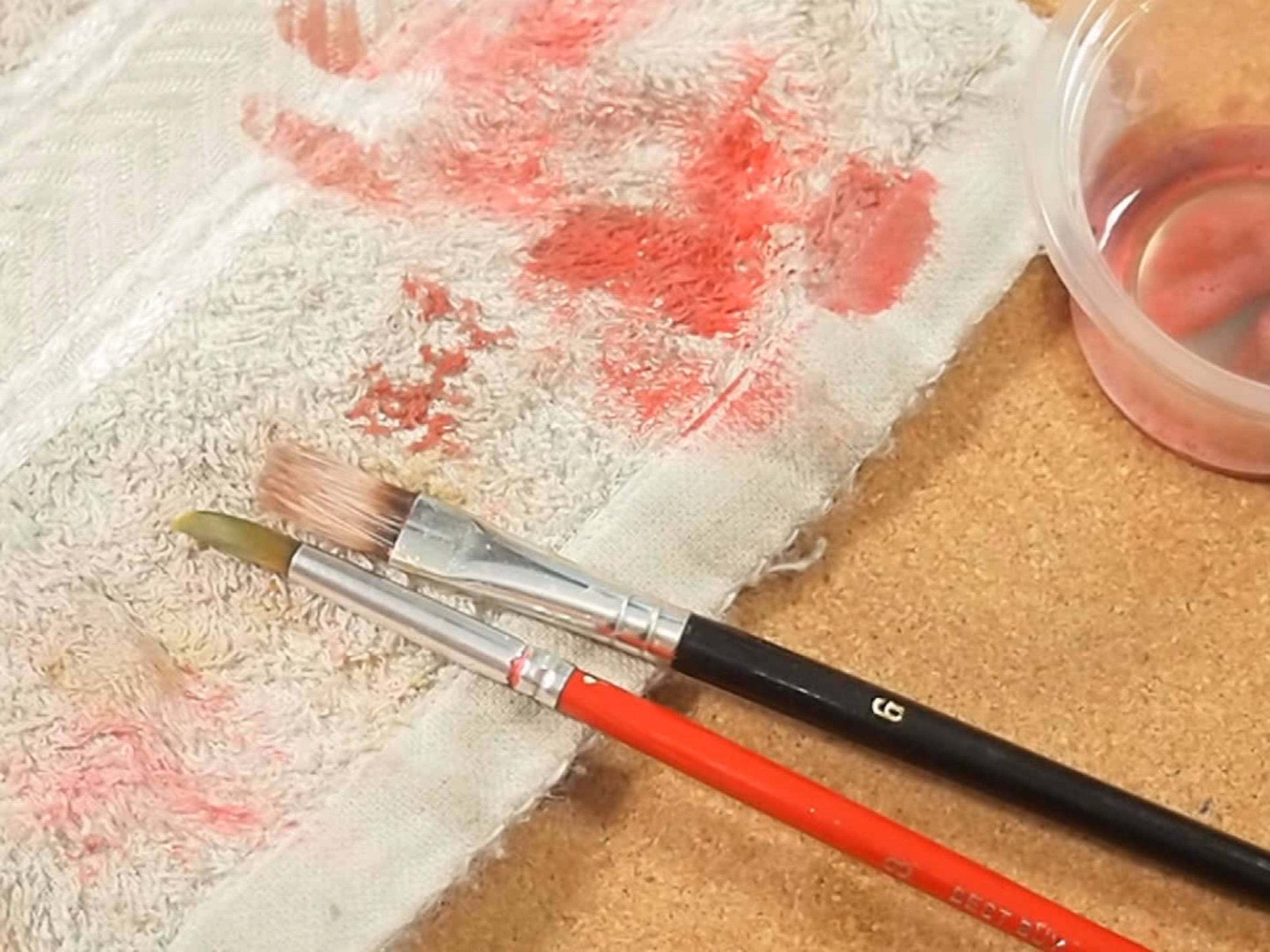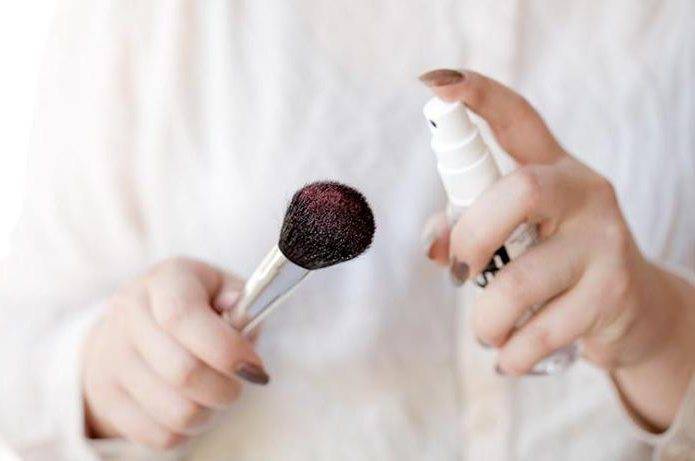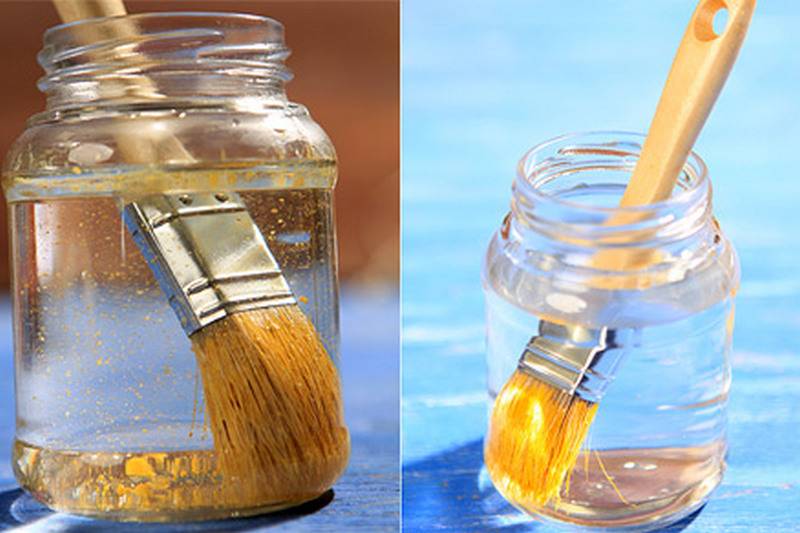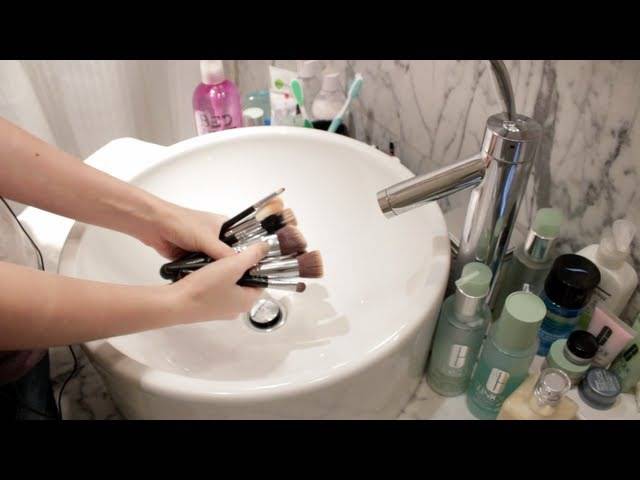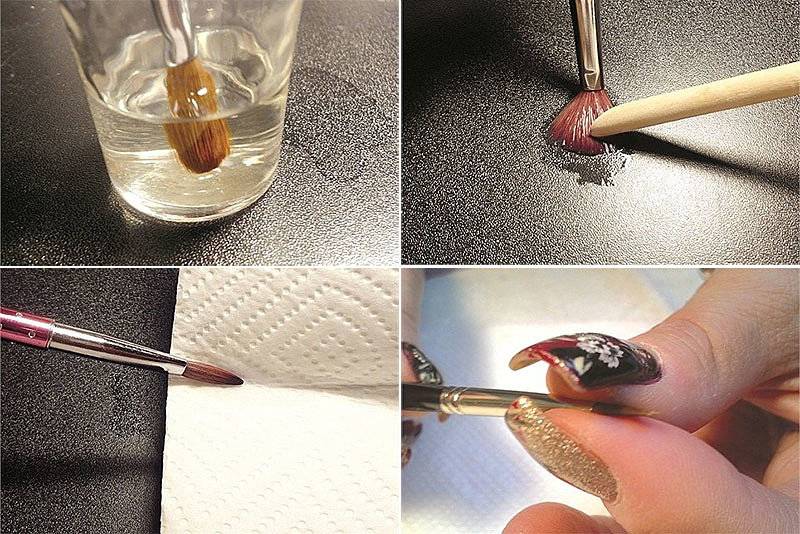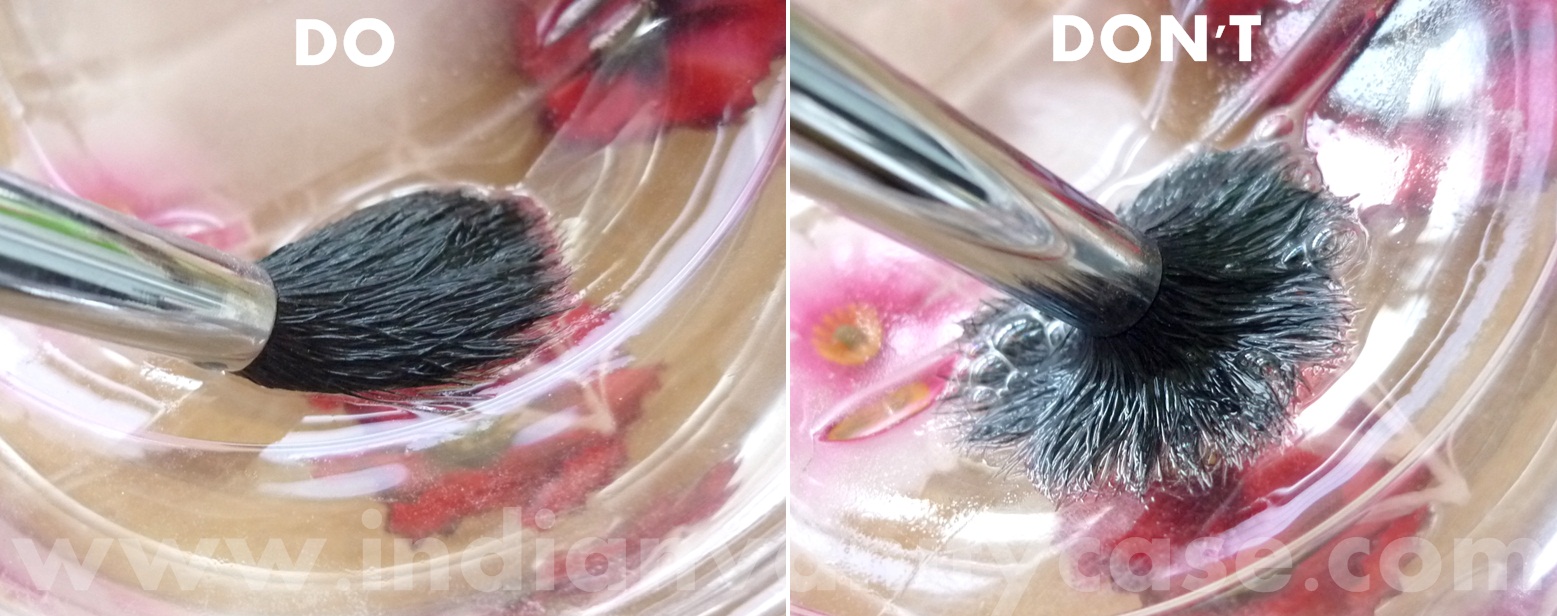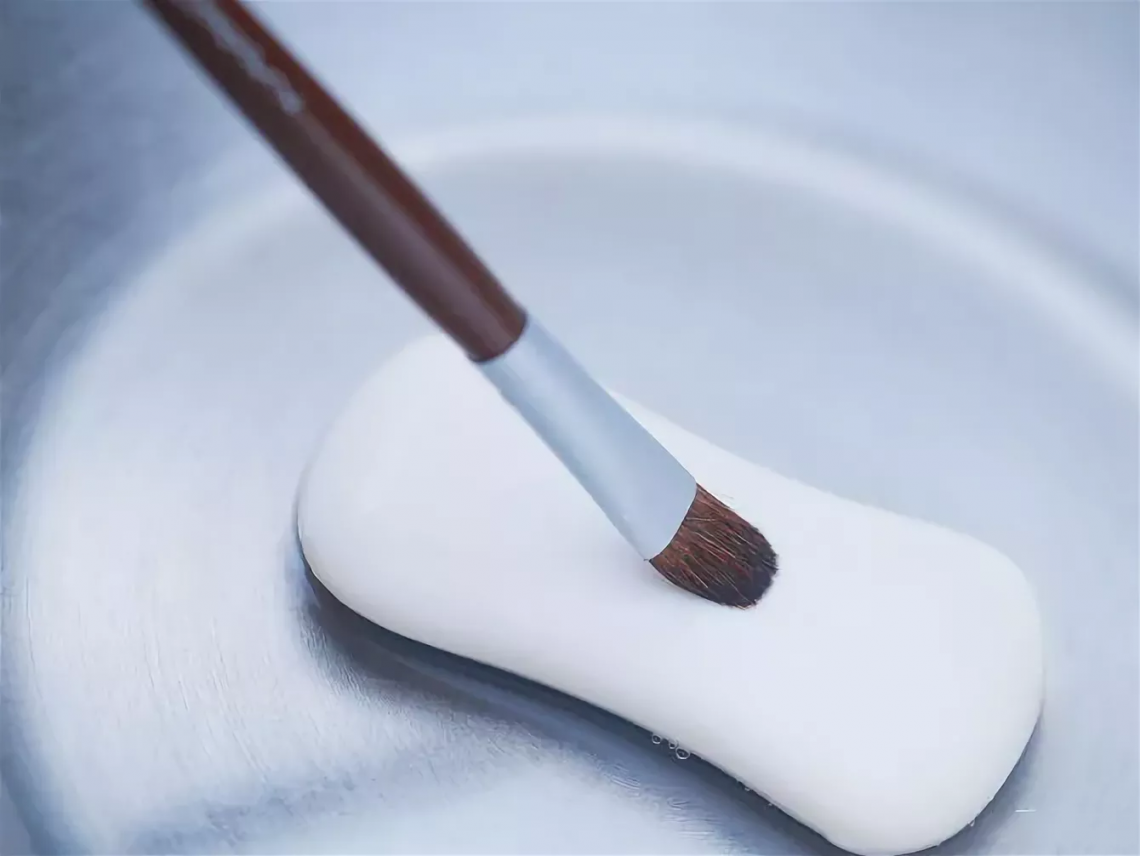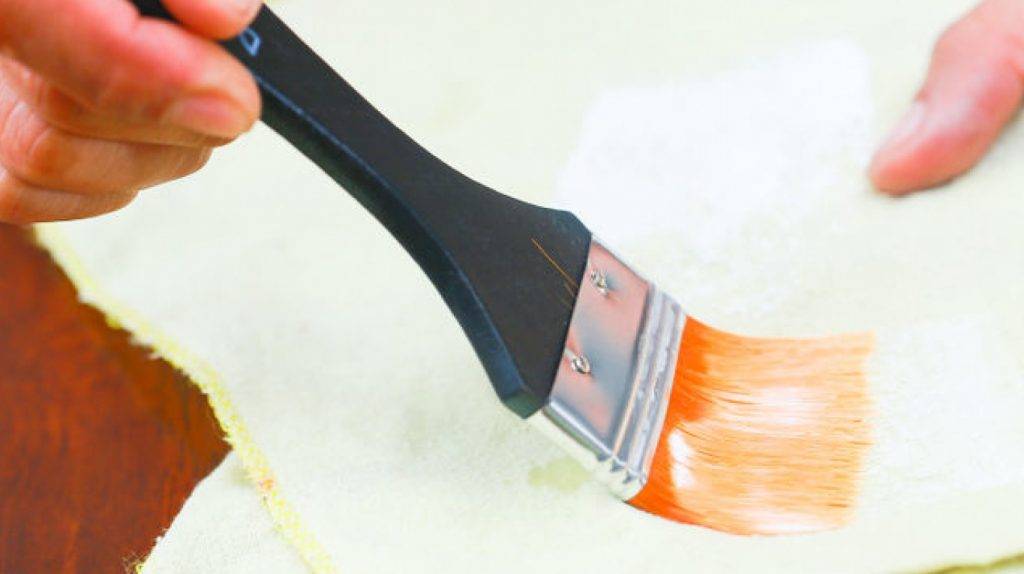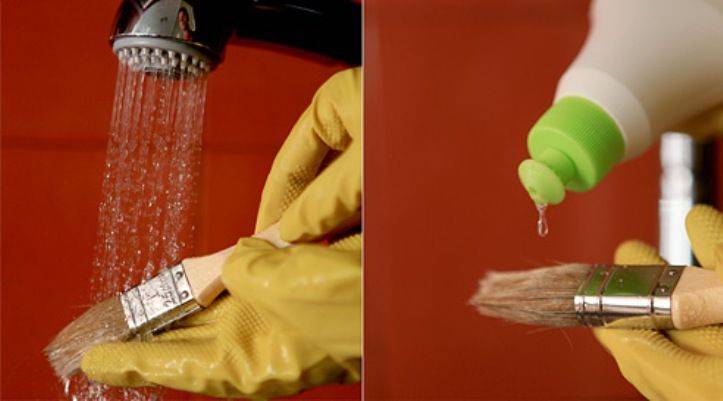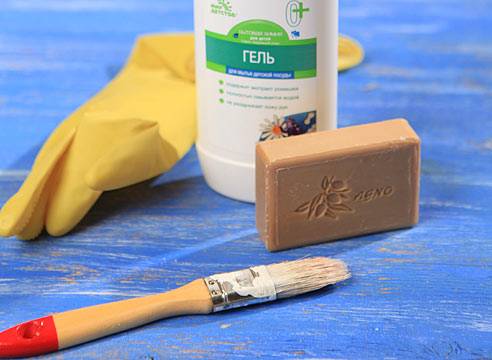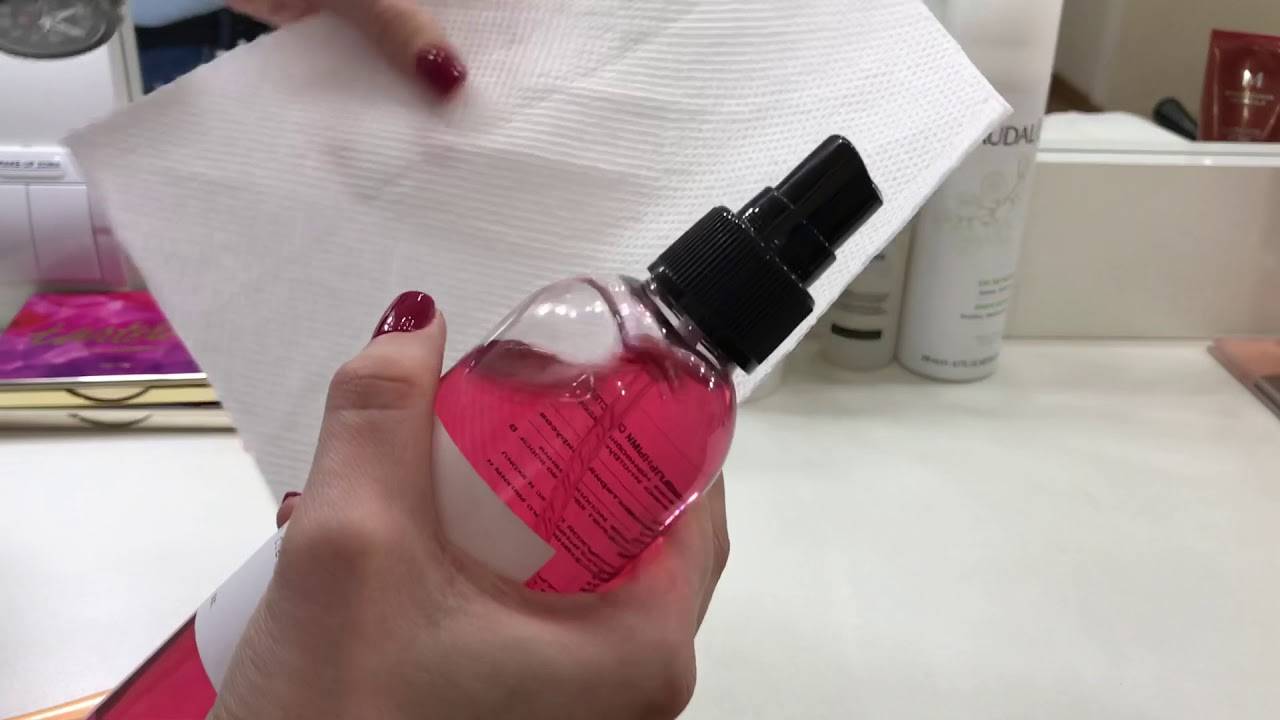How and how to wash brushes from paint: oil, acrylic
It is necessary to wash the brushes from the paint in order to preserve it as long as possible. If a short break in work is expected, for example, for lunch or a night's rest, then it is not necessary to clean the instrument, but if it is idle for a long time without cleaning and maintenance, the brush will become unusable.
Cleaning methods
In the instructions for the paint and varnish material, manufacturers usually indicate how it can be removed after painting.
Oil paints are well wiped off with turpentine or kerosene, and water emulsion can be easily washed off with water. Remaining paints can be removed with thinner, thinner, or cleaning agents.
A cleaned brush after solvents must be rinsed with water and dishwashing detergent.
The method will depend on the type of paint.
Acetone
The painting tool is soaked in acetone. After rinsing, the brush is rinsed in warm soapy water. If there is still contamination, the procedure can be repeated. It is good to wash off enamels with acetone.
Alkaline solution
It is used for dried paint. The tool is soaked in the solution, and after a while it is washed and rinsed in soapy water.
Dish gel
The dishwasher does not remove the dye, but you can rinse off the remaining solvent from the brush.
Afterwards, the instrument is thoroughly rinsed with running water.
Special rack
This is a container in the form of a small saucepan with a spring soldered to it from above. Thinner is poured inside, and the brush is fixed in the spring so that its pile is completely immersed in the agent. After cleaning, you can store the brush in the system wash, but then oil is poured instead of the solvent. Sunflower or linseed will do.
To keep the brush nap soft, it is enough to immerse only the tips of the nap in the oil.
Storage of brushes for a short break
When the brush does not require long-term storage, it does not need to be thoroughly cleaned. It is necessary to remove the remaining dye, wrap the pile with food foil or polyethylene. In this condition, the brush will not deteriorate for two days.
Long-term storage
After use, the brush is well rinsed in one of the following ways, and then placed in a suitable container. To prevent the pile from breaking, place the tool with the handle down.
Removing oil paint
There are many chemical removers on the market for removing oil paints (eg Constanta, Neomid, Dufa Abbeizer). They contain acetone, paraffin, organic solvents. The action of the washes is noticeable already after 5-10 minutes: the coating softens, deforms, after which it is easy to remove it with a spatula.
Material consumption can fluctuate between 150 and 400 grams per square meter. The specific consumption indicator is almost impossible to determine in advance, since it largely depends on the thickness of the paint and varnish layer. Based on the above, it is recommended to buy a wash with a certain margin.
Washing composition "Constant"
As an example of a wash, consider the composition from the Ukrainian trade mark "Constanta". "Constanta" can be used to remove oil, pentaphthalic and glyphthalic paints, varnishes, drying oils from wood and metal surfaces.
"Constanta" contains organic solvents, disintegrants, thickeners. Externally, the wash looks like a thick gray-white or brown-yellow suspension. The average consumption of the "Constanta" preparation is from 150 to 170 grams per layer.
Technical parameters of the cleaning agent:
- The share of non-volatile components is from 2 to 10%.
- The level of evaporation at a temperature of 20 degrees above zero is up to 6%.
- The time it takes to wash off one layer is up to 20 minutes.
- Corrosive effect on metal - from 20 minutes.
Note! The drug should be stored in a sealed container, away from direct sunlight or heating appliances. The composition does not need to be diluted with a solvent, as it is already ready for use
However, the solution must be thoroughly shaken before use: it is important to achieve its homogeneity. If, even after shaking, delamination remains (usually this is a consequence of storage at low temperatures), it is recommended to heat the jar in a water bath. The composition does not need to be diluted with a solvent, as it is already ready for use
However, the solution must be thoroughly shaken before use: it is important to achieve its homogeneity. If, even after shaking, delamination remains (usually a consequence of storage at low temperatures), it is recommended to heat the jar in a water bath
The composition does not need to be diluted with a solvent, as it is already ready for use
However, the solution must be thoroughly shaken before use: it is important to achieve its homogeneity. If, even after shaking, delamination remains (usually a consequence of storage at low temperatures), it is recommended to heat the jar in a water bath
A wash is applied with a brush or roller at an air temperature of at least 10 degrees Celsius. After about 20 minutes, the paint will begin to soften and peel off. If the layer is too thick and cannot be removed immediately, you can repeat the surface treatment with a cleaning compound.
After removing the coating, the surface should be wiped with a solvent, but not any, but from a highly volatile group. This is an important point as solvent residues can destroy the new finish.
If you are removing oil paint stains from clothes, then it is imperative to wash them.
Folk remedies
If there is no time or money to purchase a washing composition, the oil coating can be washed off using the following time-tested folk methods:
- Mixtures of turpentine with ammonia. The solution is made in the following proportion: for 2 parts of ammonia, we take 1 part of turpentine. Apply liquid with a brush, wait for an hour until the coating begins to swell. We remove it with a spatula, rinse it, dry the cleaned surface.
- A solution of quicklime (70%), potash (30%). Water is added in such a way as to obtain a viscous mixture. Apply the finished substance to the desired area, wait for at least 12 hours, then remove the paint and varnish with a spatula.
- A paste-like mixture of chalk and lime dough. Prepare the composition as follows: mix 5 kilograms of chalk with the same amount of lime dough. Add some 20% caustic soda. Put the pasty substance in a 2 mm layer on the material to be processed. Already after 60-90 minutes, the paint and varnish layer will become pliable, it can be removed mechanically.
If the wallpaper is "stained"
Was the wallpaper damaged while painting the baseboard, floor, doors or ceiling? In this case, it is possible to correct the situation if the paint has not yet had time to dry. How to wash the paint off the wallpaper? The best option is to blot the stained area immediately with a damp sponge and leave to dry.
Vegetable oil can also help remove paint from wallpaper - for this, a clean cloth is moistened in oil, applied to the stain for a while, after which it is removed with light blotting movements.
It is almost impossible to remove dried paint from wallpaper without damaging it. The solution to the problem will be to replace a stained section of wallpaper or skillful wall decor that hides a repair misunderstanding.
Removal of water-based paints
You can remove a layer of water-based dye at home in several simple ways, including:
- Combination of mechanical brushing with metal teeth and exposure to normal warm water. To begin with, leave deep scratches on the surface with a brush.Then we moisten the roller in warm water, thoroughly process the surface. We wait for 10-15 minutes until the paint swells and begins to flake off. We remove it with a metal scraper.
- Wallpaper glue. We take any sheet of paper, put glue on it, apply it to the paintwork. We are waiting for the glue to dry. Then remove with a spatula.
We clean tools during a long break
If the break between the stages of painting is longer, at least one day, the brushes should be provided with different care. After painting, leaving them in a jar with a solvent for a day is not the best method, since it can lead to deformation of the pile, which will make the subsequent painting process impossible. Therefore, you will have to wash the tool in accordance with all the rules using special products. If you do not have a professional brush cleaner, prepare the following set of accessories:
- any paint thinner;
- a disposable paper towel or piece of soft rag;
- ordinary laundry soap;
- a container deep enough to dip the brushes.
To thoroughly wash the brushes after paint and ensure they are properly cared for, several steps should be taken:
- Pour enough solvent into the container.
- Place the brush in the product, nap down, and thoroughly wet the nap.
- Then remove the brush and dry thoroughly using a rag or paper towel.
- Then the bristles of the products need to be thoroughly smeared with soapy foam and washed under running water for several minutes.
All these steps should be repeated until the pile is completely cleaned of paints and varnishes. This method of care allows you to wash the paint efficiently, even if it is dry.
Depending on the type of paint used, the brushes should be washed with different types of solvent. Paints and varnishes with a water-soluble or adhesive base can be washed off with plain water.
And if you have to wash the brush after applying oil paint, you should use a special mineral solvent.
Due to the fact that liquid for cleaning brushes and solvent are agents with too strong and specific odor, it is advisable to wash these products on the balcony or in the open air. After the procedure is completed, the brush must be thoroughly dried by placing it in an upright position with the bristles facing up.
What types of brushes are used during painting
Every person who has at least once carried out repairs in an apartment on his own is well aware that several different types of brushes are required to perform high-quality work. So, priming surfaces, painting ceilings and walls of a room with water-soluble acrylic products requires the use of large flat flywheel brushes. For working with oil paints and some other types of paints, small round or flat brushes, which are called flutes, are quite suitable.
Types of brushes
In any painting process, there are certain breaks, during which the functional properties of the brushes must be kept in their original condition - this will help avoid the need to purchase a new product, save you money and time.
How to wipe off oil paint?
Dealing with oil-based paint marks is tricky. The best results are obtained by trying to remove small drops of paint that is still fresh, in which case it may be sufficient to simply remove it with a damp cloth. Large-area recent stains are wiped off with a cotton swab or cloth dipped in vegetable oil. Dried paint can be removed by treating the problem area of the surface with solvents - refined gasoline, alcohol, kerosene, ammonia.
Different in shape and size, brushes are used for priming and painting walls, ceilings, skirting boards, doors and wooden window frames.Used in work, but left outdoors for a while, they may become unusable. The paint quickly sets, the bristles of the brush stick together and in the future it becomes inconvenient, if not impossible, to work with such a tool. Are there ways to preserve brushes and clean them of paint after use? And how can I clean paint from a brush after repairs?
Conditioner-rinse for washing
Helps clean fresh paint off the bristles. To do this, remove its remnants by wiping the brush on paper. The conditioner is mixed with water in equal proportions and the brush is rinsed in the resulting solution until the paint begins to gradually separate from the bristles. Rinse the brush under warm running water. Repeat the procedure until the desired degree of cleaning of the instrument is obtained.
Table vinegar
It can be used to wash the brush off the paint that is already dry. The brushes are soaked in essence for 60-80 minutes, boiled in a fresh portion of vinegar (10-15 minutes). Then it is thoroughly combed out with a steel brush or a fine-toothed comb. The procedure is repeated until the paint is completely removed, washed with warm water and dried.
Solvents (white spirit, alcohol, refined gasoline)
Copes with all types of dyes. To obtain a good result, the brushes are soaked in a container with any solvent for a period of half an hour to 1 hour, rinsed in a fresh portion of the solvent and rinsed thoroughly with water.
Specialized solvents ("Universal cleaner")
You can find them in hardware stores and amateur radio shops. It contains alcohol and gasoline, therefore it removes both acrylic and oil paints from brushes equally well.
How to remove paint from a brush: 13 best tools, rules for washing at home
In almost any repair work, painting is indispensable. Consumables in this case are not only paints, but also brushes, which, if desired, can be used to extend the service life. So, with proper care, any instrument will retain its functional ability. In this regard, the question of how to properly clean the paint from the brush remains relevant.
Nitro paints
Nitro paints are a finishing material that is characterized by the fastest drying among other paints and varnishes. That is why they are more often applied using a sprayer, but it also happens that the masters take up a brush. In this case, the question arises of how to wash the instrument.
Nitro solvents
Nitro thinners are the simplest and most obvious way to clean your brush quickly and effectively.
These are special products that are designed to combat nitro paint residues. All that is required is to carefully study the instructions for use for the selected drug.
Acetone
Acetone is also used if you need to clean the instrument from nitro paints. In this option, you do not need to leave it in the solution for a long time. As a rule, you need to wipe the bristles with the compound, then rinse with warm water and leave to dry.
Oil
Despite the fact that oil paints dry for a long time, brushes are deformed from them at least often. So, the composition is clogged between the bristles of the instrument, and if appropriate measures are not taken immediately, it can be thrown away.
Turpentine
In this option, you need to start cleaning the brush immediately after the end of the work. The tool is wiped in order to remove paint residues, and then washed with turpentine.
RS-1
This product is aggressive and requires careful handling. Wipe the instrument with a thinner, then rinse with water and leave to dry
White Spirit
The best option for eliminating oil paint residues is the process of soaking the tool in white spirit. Then it is washed under running water, wiped, trying to give the bristles their original appearance, and left to dry.
Alkali solution
If the oil paints have already dried, an alkali solution is used, in particular, we are talking about caustic potassium.
If the brush is made of synthetic materials, an alkaline cleaning solution will not work.
Isopropyl alcohol
Isopropyl alcohol will deal with dry paint residues. After cleaning, the instrument is rinsed and allowed to dry in an upright position.
Vinegar
The tool is soaked in vinegar for 60 minutes, after which the condition of the bristles is checked. If the bristles are not yet soft enough, repeat the procedure. Next, the brush is washed in clean water and left in an upright position until completely dry.
Dishwashing liquid
Try to squeeze the maximum paint out of the brush with a paper towel or cloth. Next, a small amount of dishwashing detergent is poured onto the hand, after which the bristles are washed under warm water.
Water-based
Water-based paint is easier to clean. It is advisable to wash the brush immediately after use under running water. If the paint has already dried on the instrument, it is easy to remove it with improvised means: detergent for washing kitchen utensils, soap.
Acrylic
To avoid problems with cleaning brushes, it is worth using water-based paint liquids: acrylic, watercolor, latex. Next, we will consider several proven ways to clean the tool from the remains of the coloring material.
Degreaser
The use of degreasing agents is relevant in that situation if the tool has been in the paint for a day and a film has formed on it.
The algorithm for using the drug is indicated on each individual product by the manufacturer.
Special cleaners
Most often, brushes are cleaned with a Universal Cleaner, which is designed to degrease coatings.
The product contains alcohol and gasoline.
Brush care rules
To extend the life of your brush, you should adhere to the following rules:
- The brush should dry exclusively in a horizontal position.
- Do not leave the instrument in water with the bristles down.
- It is recommended to wear an elastic band on the bristles so that the tool dries in the correct position.
- If, after cleaning, there are loose bristles on the brush, they should be removed with tweezers.
- If you are using oil paints on a daily basis and cleaning your brushes becomes a chore, you can try wrapping your tools in a zip-lock bag. The fact is that if the brushes are constantly left in the solvent, their service life will be significantly reduced.
General recommendations
Blot off excess paint with a cloth or soft tissue. For greater efficiency, you can gently squeeze the hairs out with your fingers or a cloth from the cartridge towards the tips, being careful not to pull on them.
If you painted with oils, rinse the brush in turpentine or oil. When using water-soluble pigments, warm water will suffice. Never use hot water. This will cause the cartridge to expand, causing hairs to fall out.
Blot the brush again with a cloth to remove any remaining paint.
Rinse your brush gently in a mild soap or dishwashing detergent solution. Rub the lint lightly with a bar of soap, then beat the lather on a surface or your palm if you are not using any toxic solvents or pigments.
Rinse hairs and repeat until no more paint of any color is washed out. The brush gets dirty over time, but do not stop rinsing until you are sure it is clean.
Don't use brute force. Be patient and rinse your brush several times.
Rinse off the remaining soap with warm water. Shake off moisture from the pile.
Use your fingers to shape the hairs to the desired shape.
If necessary, wrap the damp brush in tissue or toilet paper. The paper will shrink as it dries, giving the bristles the desired silhouette.
Leave the brush to dry at room temperature
Please note that it should not stand with the pile down, otherwise the shape will be damaged after drying. Place the brush horizontally or vertically at the tip of the grip
Do not dry too many brushes together to avoid cramping them.
If you are concerned about the toxicity of the paint you are using, or if it smears your hands while washing, wear gloves. You can also try the Bob Ross Painters Glove.
How to clean makeup brushes
1. Baby shampoo
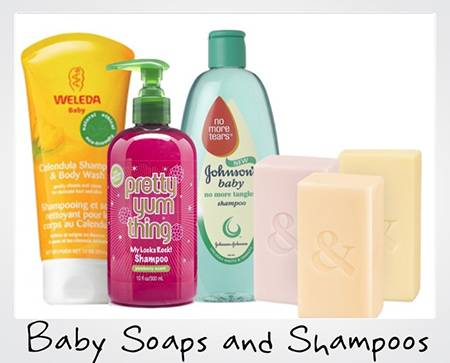
For many years I have been washing my brushes with baby shampoo. During all this time, they have not lost their shape, but, on the contrary, have retained it.
How to shampoo makeup brushes
First, squeeze a drop of baby shampoo onto a cotton swab.
Carefully dip the brush into the detergent.
“Twirl-twirl” in the palm of your hand until the nap of the brush is cleaned.
We rinse with water.
Bottom line: This method is acceptable for brushes that only you use. If you work as a makeup artist, then you definitely need to disinfect your brushes! And the next option is just for you.
2. Special means for cleaning brushes (Makeup Brush Cleaners)

Similar fluids can be found in every brand. This applies not only to professional but also luxury brands, for example:
- Bobbi Brown Conditioning Brush
- Clinique Makeup Brush Cleanser
- Estee Lauder Makeup Brush Cleaner
- Mac Cosmetics Makeup Brush Cleanser - I use it to wash my "working" brushes (read the review here).
How to wash your brushes with the special brush cleaner
I talked about this in detail in the article "How to wash brushes using a special tool"
Bottom line: the difference between these products is that they contain alcohol, which is necessary for disinfecting the brushes!
If you are afraid that alcohol will badly affect the pile, then this is not the case. A certain amount of alcohol has long been calculated in such products and believe me, they are not intended to destroy brushes, but only to disinfect them.
3. Tea tree oil
It has been noticed that tea tree oil has antibacterial properties, though not as strong as previous remedies.
How to clean brushes with tea tree oil
- Add 3-4 drops of tea tree oil to a container of warm water.
- Lower the brush and rinse.
- You can add one teaspoon of baby shampoo to make sure your brushes are clean.
Bottom line: I have never tried this cleaning method, but I heard about it as the most positive way.
4. Napkins or makeup remover as a way to cleanse brushes (Makeup Remover Wipes)
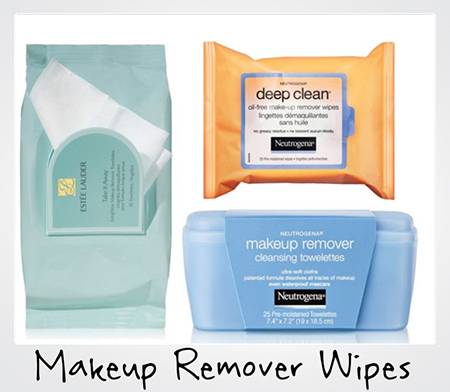
This method is convenient when traveling, when there is no oil, no special product, no baby shampoo at hand! I'm sure no girl will forget to take makeup remover on a trip. This is exactly what will help out your brushes.
How to clean brushes with makeup remover wipes
- Dampen a cotton swab with makeup remover
- Brush over it a couple of times until it is clean.
- The same can be done with napkins - with the help of circular movements of the brush until completely cleansed.
5. Laundry soap
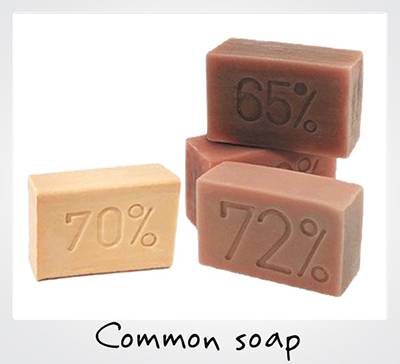
The only tool that completely removes creamy textures from brushes! This includes watercolors, waterproof cream eyeshadow and foundation.
How to clean your brushes with laundry soap
- Brush the soap a couple of times
- Clean with circular motions in the palm of your hand.
- Rinse with water.
Bottom line: I am completely calm about the condition of the brushes after this method of cleaning, since when working with creamy textures you are dealing only with synthetic, not natural, bristles. Only with this soap do I manage to wash brushes after creative make-up.
How to dry makeup brushes
- After you have washed the brushes, under no circumstances put them directly into the glass, otherwise water will get into the mounting place and dilute the glue! Result: a handle that fell off.
- Place them on a pre-laid out napkin on the table. I use kitchen paper towels.
- Wash your brushes at least once a week. If you have rashes and other skin problems, then try to wash them more often, at least every other day.
Gossip
- They say that brushes that have lost their shape can be restored to life by holding them in water at 90 ° C.about 3 minutes.
- It is also said that brushes can be disinfected with chlorhexidine, as one of the cheapest options.
I have not tested these options, because I do not want to risk brushes, which I love very much and treat them thriftily.
Conclusion: it depends only on you how long your makeup brushes will last. Choose a cleanser depending on the challenge you face. Dry properly and keep them clean.
How do you clean your makeup brushes?
Baby shampoo
16.67%
Special products and for cleaning brushes
16.67%
Tea tree oil
16.67%
Make-up remover wipes
0%
Laundry soap
50%
Votes: 6

